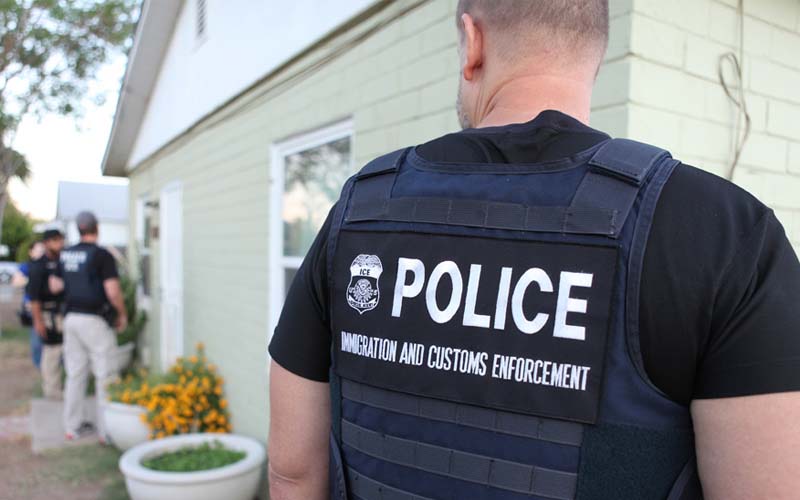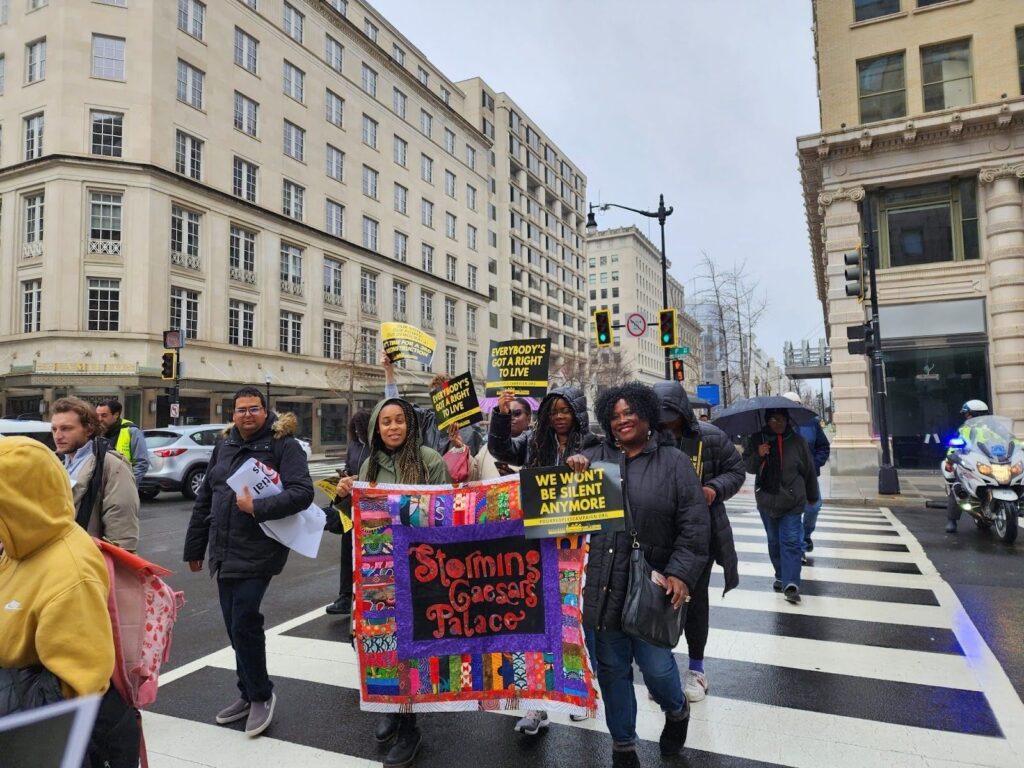Even as crackdowns and harsh rhetoric at the federal level spread fear, D.C. nonprofits and government agencies are expanding services offered to immigrants. “The mayor’s line is ‘Our values didn’t change on Election Day,’” said Carter Hewgley, a senior advisor at the Department of Human Services (DHS).
The District boasts relatively generous government programs aimed at reducing the blight of homelessness in D.C., but the immigrant community continues to face particular barriers to benefits, representation in domestic violence cases, and employment. In this context, DHS is preparing for hypothermia season and encounters with Immigrations & Customs Enforcement (ICE), while the Legal Aid Society of D.C., is expanding its immigration practice and moving to hire a full-time immigration attorney, thanks to a grant from the Venable Foundation.
From fear of deportation and language barriers to racism and discrimination, immigrants experiencing homelessness face an array of obstacles in searching for a way out. Part of this difficulty in accessing services is a response to the policies and rhetoric of the current presidential administration. “Given this political climate, we’ve seen an uptick in fear in our client community,” said Eric Angel, Executive Director of Legal Aid.
For some, this fear was validated earlier this year after reports of ICE agents targeting undocumented people experiencing homelessness. On Feb. 8, agents arrested several Latino men as they left a church-run hypothermia shelter in Fairfax County. In October, as part of a nationwide wave of nearly 500 arrests targeting sanctuary cities, ICE agents arrested 14 D.C. residents. The enforcement actions have reverberated throughout the D.C. homeless services community. Responding to these concerns, DHS devised a protocol and response plan for service providers if ICE agents pay them a visit.
“If they’re an ICE agent, then you have to see their badge to prove that’s who they are. You need to ask to see a copy of any warrant or any documents they have that may speak to their reason for being there,” Hewgley said. The next step, according to Hewgley, is to call Dallas Williams, a DHS administrator, who will then coordinate with D.C. Attorney General Karl Racine to determine the best course of action.
That course of action depends on the reasons for which an ICE agent is present, according to Hewgley. By seeing the search warrant, city officials can evaluate whether ICE agents are targeting a general homeless community or fulfilling one of their “other proper functions,” such as searching for one person for a specific crime, he said. Answering that question will determine the District’s response.
Up to this point, however, the system is untested. Hewgley said that DHS is not aware of any ICE raids on District-sponsored service providers. The response protocol has been publicized, along with multiple means of contacting Williams, but “we’ve never been contacted,” Hewgley said.
Yet the climate of fear persists, and for undocumented survivors of domestic violence in particular, “there’s more concern than in the past that simply by using the court system they may risk harm because of their immigration status,” explained Angel.
Similarly, the Latin American Youth Center (LAYC), a major service provider for low-income D.C. youth of all races, has encountered difficulties reaching out to Latinx youth as a result of fear of ICE, according to John Van Zandt, the manager of LAYC’s Safe Housing Program. At that program’s Drop-In Center, which served nearly equal numbers of Black and Latinx youth at its founding in 2015, the portion of Latinx clients has tumbled to a mere 20 percent, according to Van Zandt.
“The Latino youth that do trickle in here and there, either documented or not, haven’t necessarily said ‘the reason why my buddy José doesn’t come here is because of this or that,’ but we think it could be fear of walking into buildings and putting your names on forms. With the whole ICE scare maybe they are trying to stay in the shadows a little bit more,” Van Zandt said.
The possibility that people in need may be intimidated out of even reaching out to service providers has advocates in the District worried. On Oct. 25, attempting to address the feeling of insecurity, DHS published a short video online that reminded residents of their right to shelter, as well as the benefits of living in a sanctuary city. In D.C., public safety officers are not permitted to ask about immigration status or to contact ICE to initiate enforcement unless related to a criminal investigation. “Our bottom line,” Hewgley said, “is that we want to do everything in our power to make sure you feel safe to come inside, regardless of what your circumstances are.”
The exact dimensions of the new services that Legal Aid will provide in the context of these widespread concerns have yet to be determined, but “at minimum, we’ll be doing all the things we’ve been doing, but better,” Angel said. The firm plans to hire a full-time immigration lawyer, its first in at least many years, according to Angel, and use that new attorney’s expertise to guide the expansion of the practice.
In addition to reaching out to those who, like undocumented survivors of domestic violence, fear that their immigration status precludes them from accessing legal remedies, the expanded immigration practice will likely take on clients struggling to find housing, work and access to public benefits.
Many immigrants, especially those who are undocumented, fear they will be unable to access public benefits “even though they shouldn’t,” Angel said. Some benefits are tied to immigration status, and it can be difficult to determine eligibility without legal help.
Pointing in particular to language barriers, which can prevent some immigrants from fully understanding their rights and being able to advocate for themselves, Angel said that in work and housing, “someone whose immigration status is uncertain can be taken advantage of.”
Emma Rizk contributed reporting.
Correction (12/18/2017)
This article has been updated to correct how many Latinx young people the Latin American Youth Center serves. The number has fallen to 20 percent of total youth served by the program. It was initially listed as 10 percent.








